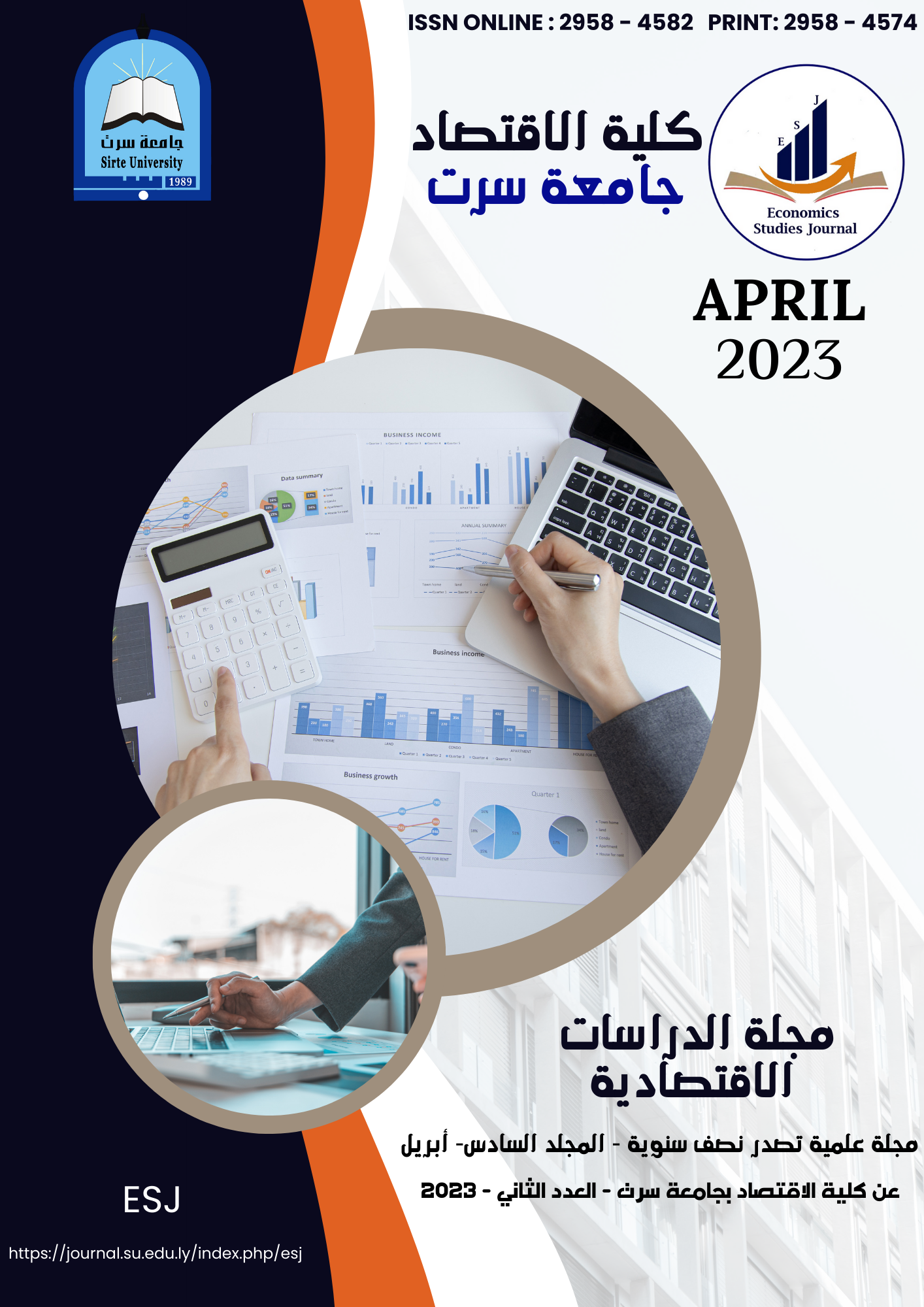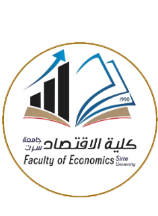The Impact of Political Stability and Violence on The Libyan Trade Balance
الكلمات المفتاحية:
Political Stability and Violence، Trade Balance، Macroeconomics، Autoregressive distributed lagged Model (ARDL)الملخص
This paper aims to analyses and study the impact of political stability and violence on the Libyan trade balance. To achieve this, a model was built based on the general equilibrium identity in the Libyan economy to measure the impact of political stability and violence on the Libyan trade balance. And by applying the methodology of Autoregressive distributed lagged Model (ARDL) for the period from 1986 to 2017. The results showed the high relative importance of the political stability and violence variable in explaining the changes in the Libyan trade balance, especially in the long term. In addition to the variables of the size of the domestic market, government spending, government revenue, the exchange rate of the Libyan dinar against the US dollar, and inflation in explaining the changes that occur in the Libyan trade balance. In general, the deterioration of the political, security and social conditions, armed conflicts, institutional division, and the governmental transitional period and its extension do not lead to an improvement in the economic environment of the state, and its results are in hindering the implementation and application of economic recovery tools to reach economic well-being. The Libyan parties must take into account the consequences of political and violence and security instability on the future of the Libyan economy
المراجع
References
Aghayev, E. (2013). Analysis and background of the “Arab Spring” in Libya. European Research, Vol. (39), No.1-2.
Ansani, A., & Daniele, V. (2012). About a Revolution: The Economic Motivations of the Arab Spring. International Journal of Development and Conflict, Vol. 3(3).
Ayasrah, T. (2016). The Main Factors Behind the Outbreak of Protests and Revolutions in The Countries of The Arab Spring: 2009-2011. Studies, Humanities and Social Sciences, Vol. 43, Appendix 4.
Central Bank of Libya. (2014). Fifty-eighth annual report for the 2014 fiscal year. Tripoli, Libya.
Central Intelligence Agency (CIA). (2014). World Factbook-Libya. February 2014, Retrieved 5 March 2014.
Central Intelligence Agency (CIA). (2017). Jump Up To: Ease of Doing Business in Libya. Retrieved 2017-11-29.
Central Intelligence Agency (CIA). (2018). World Factbook-Libya. Retrieved 5 May2018.
Cohen E. (2016). From Arab Spring to Economic Winter – examination of the relationship between politics and economics as evident in the Syrian civil war during 2011-2015. Journal of International Studies, Vol. 9, No 1, pp. 9-26.
Espedal, M. (2012). The Relationship Between Natural Resources and Armed Conflict Onset: “It’s Complicated” A Quantitative Analysis of How Natural Resources Affect Internal Armed Conflict Onset During the Period 1950-2003. Ph.D. thesis available at: http://bora.uib.no/bitstream/handle/1956/6023/97129698.pdf?sequence=1.
FAOSTAT (2022), Food and Agriculture Organization of the United Nations, https://www.fao.org/faostat/en/#data.
Fjelde, H. (2009). Buying Peace? Oil Wealth, Corruption, and Civil War1985-1999. Journal of Peace Research, 46(2):199-218.
Haidar, R. (2012). The Arab Spring Revolutions and The Future of The Arab Political System. Al-Asmarya University Journal, Issue 24.
Humphreys, M. (2005). Natural Resources, Conflict, and Conflict Resolution. Journal of Conflict Resolution. 49(4): 508-537.
International Monetary Fund (IMF). (2018). World Economic Outlook Database (WEO). IMF. October 2018.
Jaouni, F., Ali, A., & Deeb, A. (2013). Analysing the relationship between the general budget and the trade balance using the co-integration method and the causal relationship: an applied study on the Syrian economy during the period 1990-2009. Tishreen University Journal for Research and Scientific Studies. Series of Economic and Legal Sciences: Volume 35, Issue 5.
Mousawi, W. (2016). Analysis of the relationship between budget deficit and external balance in the Algerian economy for the period (1990-2010). Yahya Fares University. Laboratory of Sustainable Local Development, Medea. Journal of Economics and Development, Issue 06.
Ohmura, H. (2014). Civil War, Natural Resources, and Democracy: When Do Natural Resources Lead to Civil War? The Hikone Ronse. Spring/No.399: 172-185.
Ross, M. (2004). How Do Natural Resources Influence Civil War? Evidence from Thirteen Cases. International Organization. 58(1), 35-67. doi:10.1017/S002081830458102X.
Ross, M. (2004). What Do We Know about Natural Resources and Civil War? Journal of Peace Research - J PEACE RES. 41. 337-356. 10.1177/0022343304043773.
World bank. (2017). Ease of Doing Business in Libya. Doing Business. Retrieved 2017-11-29.
World Bank. (2017). World Development Indicators, 17/04/2017.
World Bank. (2020). Finance, Competitiveness and Innovation Report. (2020). Entitled “Review of the Financial Sector in Libya” issued in February 2020.
Yang, B., & Lester, D. (1994). The effect of war on the economy. Atlantic Economic Journal 22, 81. https://doi.org/10.1007/BF02301802




































